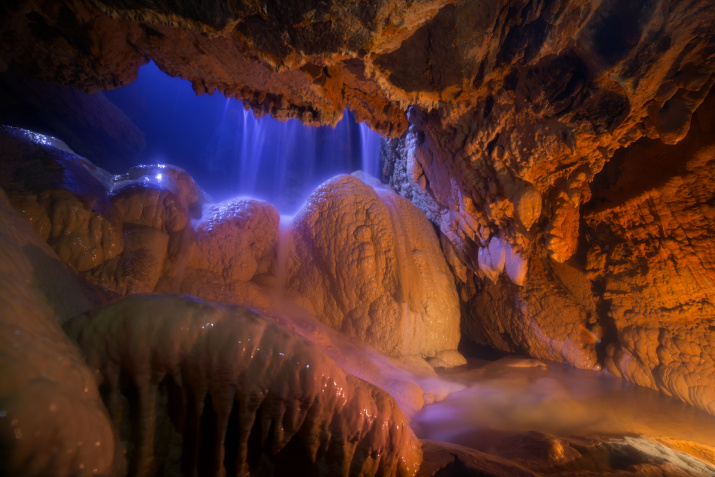The Association of Sevastopol Speleologists is studying the Crimean Zheltaya Cave, discovered on Ai-Petri back in 1958. During recent expeditions, it turned out that the cave could be much longer than previously thought. It also contains interesting fossils.
Zheltaya Source-cave, or Sokolinskaya, is located in the upper reaches of the left tributary of the Kokkozka River, in the Bakhchysarai District of the Republic of Crimea. The entrance to the cave is a small hall with a lake at the bottom, into which an 8-meter waterfall falls. From the entrance to the cave flows a spring, which forms picturesque deposits of calcareous tufa. The cave is richly decorated with flowstones: stalactites, stalagmites, cascading flowstones. The total length of the cave, known until recently, is 212 m.
In the summer of 2020, the Association of Sevastopol Speleologists held a speleo-school in Zheltaya Cave. During the training of novice speleologists in the basics of the profession, experts discovered that there was a fairly active movement of air in the cave. The air was flowing out especially well from the tunnel, in which the roof had collapsed earlier, blocking the passage.
Consequently, in November 2020, speleologists equipped an expedition into the cave to clear this tunnel. As a result, the researchers were able to get into new parts of the cave and "added" more than 100 meters to its length.
"The prospects for this cavity are simply enormous. This is evidenced by the signs that we see on the surface: a huge amount of tufa, including the Silver Streams waterfall; a constant water flow; powerful air draft comparable to the Caucasian caves," says speleologist Alexei Akimov. “Now we have reached a large blockage through which we need to find the right path to the next tunnels in this unique cave."
It is interesting that there are paleontological findings in the cave. For example, speleologists have discovered a coral that is about 150 million years old. It was decided to transfer it to the Valentin Verbitsky Paleontological Museum in Yalta.
Research will be continued.


